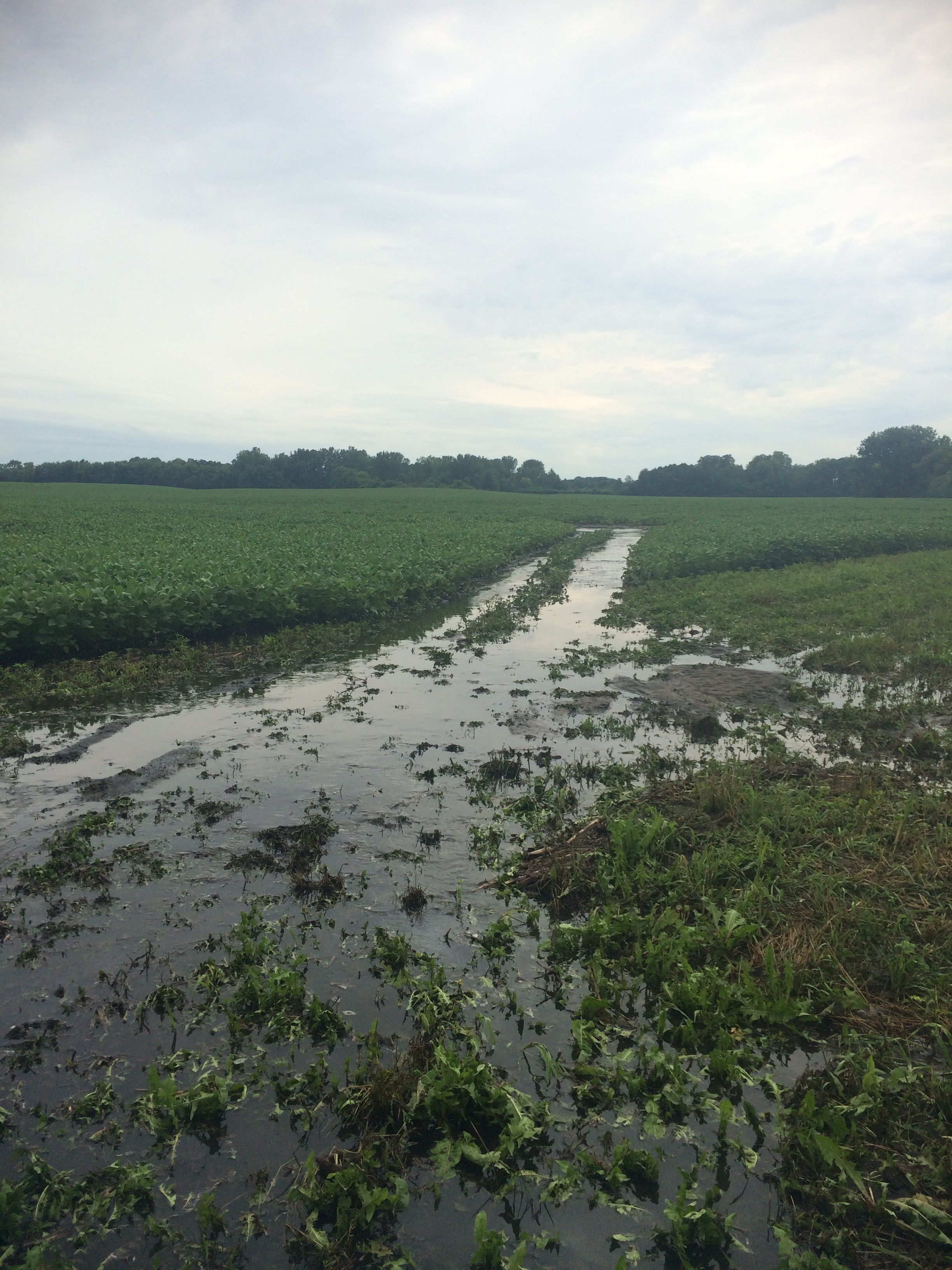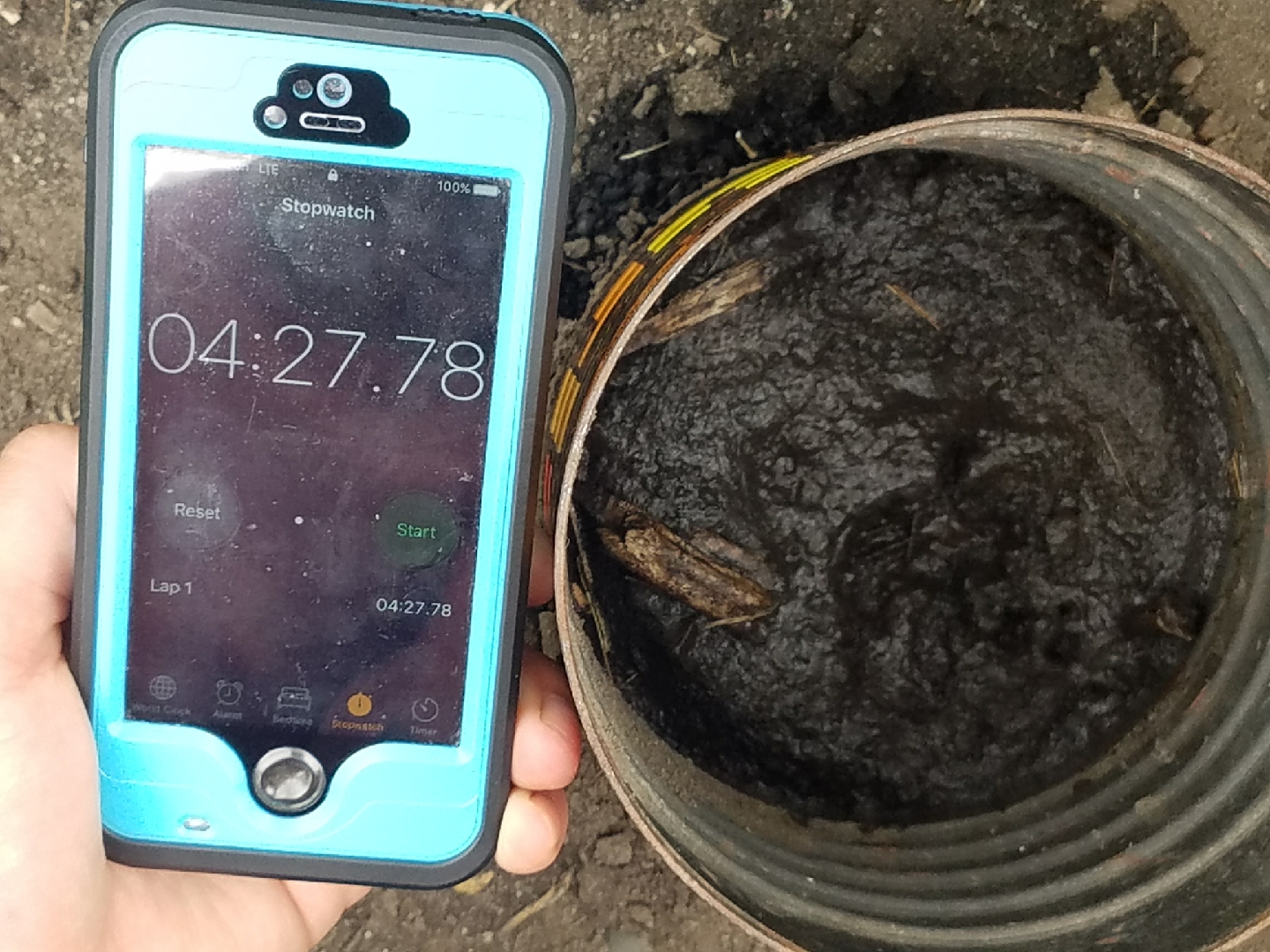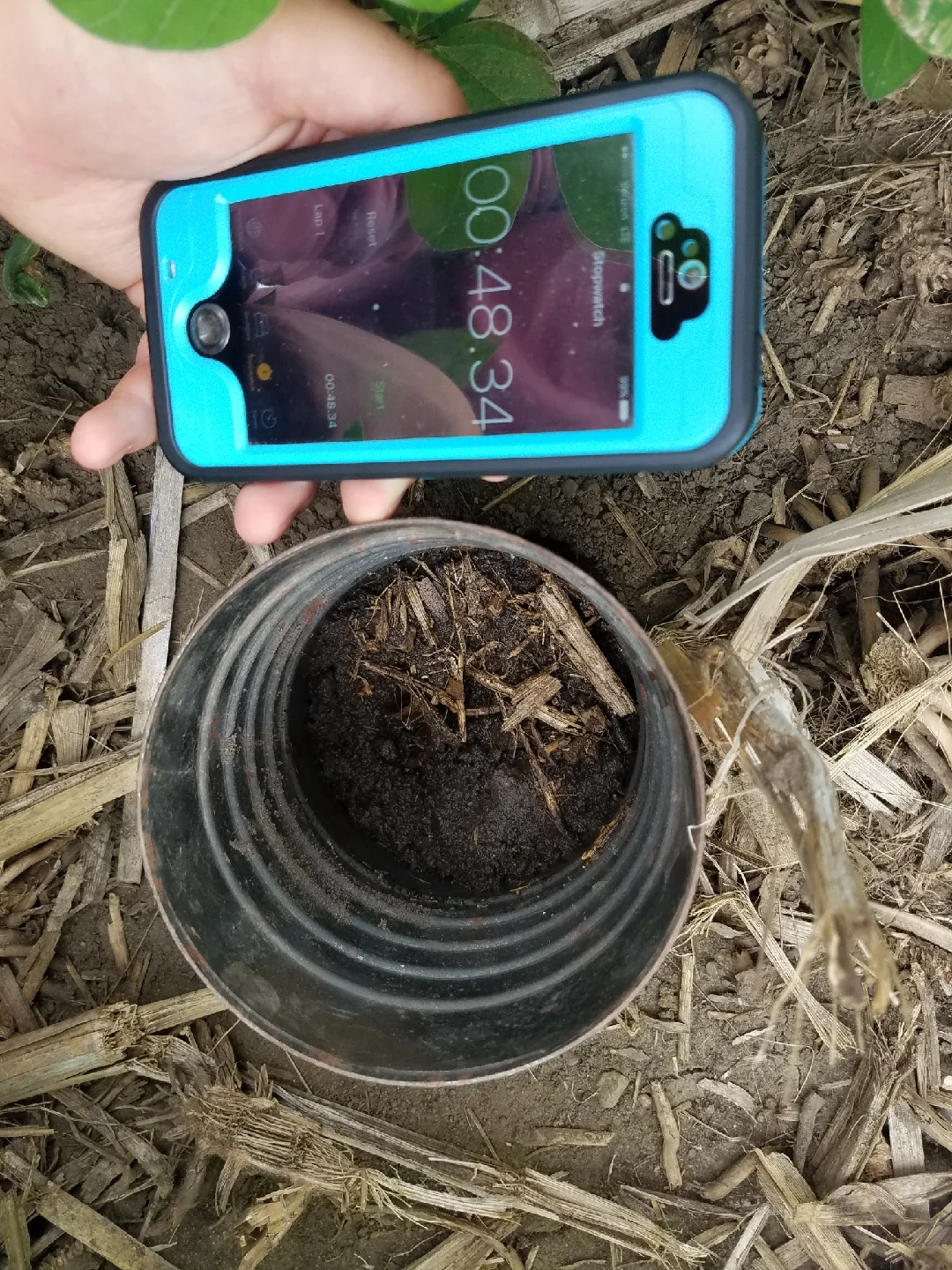By Claire Hinther
With almost 5.5 inches of rain in two days, conditions on the saturated buffer changed drastically. Because of the significant amount of standing water and the rapidly rising creek, I drew two days’ worth of water samples for nitrogen testing. During and after this weather event I also tested for dissolved oxygen and oxidation-reduction potential, which can be used as indicators of denitrifying activity in the buffer.
The recent rain served as a reminder that, although saturated buffers are an option for mitigating agriculture runoff and pollution, they are not the only solution to the problem. Farming practices have a major effect on water absorption and runoff. To demonstrate these effects, Dave and I ran a simple experiment. We poured an inch of water into a bottomless cylindrical coffee can pushed just below the surface of the field, and then we observed the amount of time required for the soil to absorb all of the water.
The first field that we tested has a history of heavy tillage. In this field, corn stalks were ripped in conditions so wet that a 400 horsepower track tractor became stuck in the mud. In spring of 2017, repeated field cultivator passes yielded wet and lumpy soil. Soybeans were planted in wet conditions, and the field was rolled with a massive land roller to crush dirt clods and press rocks into the soil. The second field tested has been in no-till for 18 years. The absorption potentials of these fields were remarkably different, with the heavily-tilled soil taking over four times as long to absorb the same amount of water.
Considering the amount of water running off of the no-till field despite its high capacity to absorb water, it is alarming to imagine the runoff from the heavily-tilled land. Saturated buffers, despite their value for mitigating runoff and pollution, cannot serve as a substitute for responsible, conservation-based farming practices.
---
Claire’s previous blog entry: Baseline Samples
Claire's next blog entry: Sampling Results




